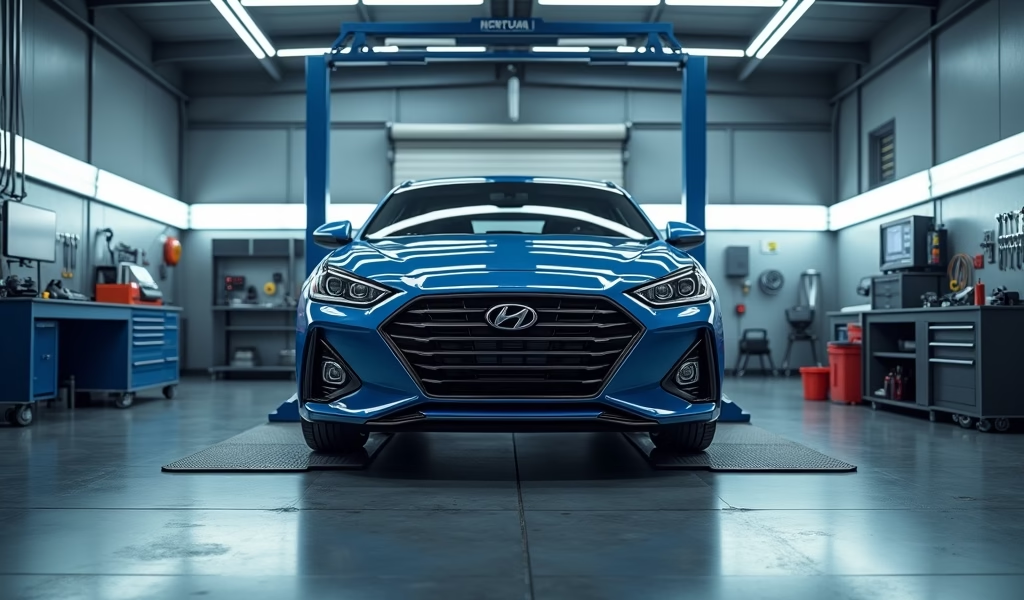Overview
This car buying guide walks readers through the entire process from assessing personal needs and researching options to negotiating deals, understanding paperwork, and maintaining the vehicle post-purchase. The article emphasizes making informed decisions based on practical considerations rather than impulse, with specific advice from a mechanic’s perspective on inspection points, test driving techniques, and long-term ownership planning.
Table of Contents
- Understanding Your Needs: The First Step in Car Buying
- The Research Phase: Finding Your Perfect Match
- Financial Considerations: Budgeting for Your New Car
- Navigating the Dealership Experience
- Test Driving: The Essential Hands-On Experience
- The Pre-Purchase Inspection Checklist
- Negotiation Strategies: Getting the Best Deal
- Understanding the Paperwork
- Post-Purchase Care: Keeping Your New Car in Top Shape
- Conclusion: Driving Away Happy
- Frequently Asked Questions
Understanding Your Needs: The First Step in Car Buying
Embarking on a new car buying journey can feel like setting sail into uncharted waters. As a mechanic with over 15 years of experience, I’ve guided countless people through this process. The key to a successful purchase begins with understanding exactly what you need in a vehicle—not just what catches your eye in advertisements.
Start by assessing your daily driving habits. Do you have a lengthy commute that would benefit from excellent fuel economy? Perhaps you frequently travel rough terrain that demands four-wheel drive capability. Maybe you need space for a growing family or regular cargo hauling. These practical considerations should form the foundation of your new car buying guide checklist.
Consider your lifestyle honestly. That sleek two-seater convertible might call your name, but if you’re regularly transporting kids, pets, or equipment, you’ll quickly regret prioritizing style over function. I’ve seen too many customers return within months, trading in vehicles that didn’t align with their actual needs.
The Research Phase: Finding Your Perfect Match
Once you’ve identified your needs, it’s time to dive into research—arguably the most critical phase of your car buying journey. The digital age has made this easier than ever, with detailed specifications, owner reviews, and expert opinions just a few clicks away.
Start by exploring comprehensive car buying guides that compare vehicles within your target category. Look beyond the manufacturer’s marketing materials to find impartial assessments from automotive journalists and real owners. Pay particular attention to reliability ratings from organizations like Consumer Reports and J.D. Power, as these provide insight into potential long-term ownership experiences.
Don’t overlook these crucial research areas:
- Safety ratings and features (IIHS and NHTSA evaluations)
- Fuel economy expectations (EPA ratings vs. real-world reports)
- Maintenance requirements and projected costs
- Common problems reported for specific models
- Resale value projections
Take your time with this phase. The hours invested researching can save you thousands of dollars and countless headaches down the road. As a mechanic, I’ve seen the stark difference between informed buyers who choose reliable vehicles and those who rush into purchases based solely on appearance or initial price.

Financial Considerations: Budgeting for Your New Car
Let’s talk money—the aspect of car buying that often causes the most stress. The sticker price is just the beginning of your financial commitment. As someone who’s seen the full lifecycle costs of vehicles, I recommend calculating your total ownership expenses before committing to a purchase.
The true cost of ownership includes:
- Monthly payment (if financing)
- Insurance premiums
- Fuel expenses
- Regular maintenance costs
- Projected repairs
- Registration and taxes
- Depreciation
A common mistake I see is stretching a budget to afford a luxury vehicle without accounting for the premium maintenance costs that come with it. That German engineering might be tempting, but are you prepared for potentially higher service costs? According to Edmunds’ True Cost to Own calculator, luxury vehicles can cost 30-50% more to maintain over five years compared to mainstream models.
Consider securing pre-approved financing from your bank or credit union before heading to the dealership. This provides leverage during negotiations and helps establish a firm budget boundary. Remember, a vehicle that stretches your finances isn’t just a burden on your wallet—it can become a source of daily stress that diminishes the joy of ownership.
Navigating the Dealership Experience
Walking into a dealership can be intimidating, but with preparation, you can transform it into a productive partnership. Before visiting, call ahead to confirm the specific models you want to see are available. This simple step saves time and reduces the chance of being redirected to vehicles that don’t meet your criteria.
When you arrive, make it clear you’re there to gather information, not necessarily to buy that day. This relieves pressure and gives you space to make rational decisions. A good salesperson will respect this boundary and focus on helping you find the right match rather than pushing for an immediate sale.
Be prepared with specific questions about the vehicles you’re considering. As a mechanic, I suggest asking about:
- Service schedules and warranty coverage details
- Any technical service bulletins (TSBs) issued for the model
- Availability of parts and typical repair timeframes
- Dealer service department capabilities and certifications
Don’t limit yourself to a single dealership. Finding the best place to buy a car often requires visiting several locations to compare inventory, pricing, and customer service approaches. The dealership relationship often continues long after purchase, especially if you plan to use their service department, so choosing one with a solid reputation for customer care is important.
Test Driving: The Essential Hands-On Experience
No amount of research can replace the hands-on experience of a thorough test drive. As a mechanic, I recommend spending at least 30 minutes behind the wheel, ideally on various road types—highway, city streets, and if possible, rougher terrain—to fully evaluate a vehicle’s performance.
During your test drive, pay attention to these often-overlooked aspects:
- Seat comfort after 15+ minutes of driving
- Visibility from all angles
- Noise levels at different speeds
- Ease of operating controls while driving
- Acceleration and braking responsiveness
- Steering feel and turning radius
- Suspension response over bumps and corners
Don’t be shy about adjusting seats, mirrors, and climate controls to your preferences. These interactions reveal how intuitive the vehicle’s ergonomics are. If possible, test the parking assist features and back-up cameras in real situations. According to Consumer Reports, many buyers report post-purchase dissatisfaction with features they didn’t properly test during their brief dealer drives.
Remember, this vehicle will be your daily companion for years—take the time to ensure it feels right in all the ways that matter to you personally.

The Pre-Purchase Inspection Checklist
Even when buying new, a thorough inspection is essential. While manufacturing standards are high, vehicles can sustain damage during transport or while sitting on dealer lots. Here’s my professional inspection checklist to ensure you’re getting a truly factory-fresh vehicle:
- Check panel gaps for consistency and alignment
- Inspect paint under various lighting for uniformity
- Verify tire manufacture dates (should be recent)
- Check for full fluid levels with clean fluids
- Examine undercarriage for any transport damage
- Verify all electronics function properly
- Ensure all accessory items are included (spare tire, jack, etc.)
- Check the odometer reading (should be minimal, typically under 50 miles)
Don’t hesitate to request the vehicle’s history report, even for new cars. This can reveal if it’s been sitting on the lot for an extended period or was transported between dealerships. Vehicles that have been stationary for months may require additional attention to batteries and other systems.
If you notice any issues during your inspection, politely request they be addressed before finalizing the purchase. A reputable dealer will understand these concerns and work with you to ensure the vehicle meets your expectations.
Negotiation Strategies: Getting the Best Deal
Negotiation makes many car buyers uncomfortable, but it’s an expected part of the process. With the right approach, it can actually be respectful and productive for both parties.
Enter negotiations armed with information about the vehicle’s fair market value from sources like Kelley Blue Book, TrueCar, or Edmunds. Understanding the dealer’s margin gives you realistic expectations about potential discounts. Focus negotiations on the “out-the-door” price rather than monthly payments, as the latter can be manipulated by extending loan terms without actually reducing the vehicle’s cost.
Effective negotiation tactics include:
- Being prepared to walk away if terms don’t meet your needs
- Remaining polite but firm about your budget constraints
- Discussing dealer add-ons separately (many are negotiable)
- Considering end-of-month or end-of-quarter timing when dealers may have sales targets to meet
- Getting competing offers from multiple dealerships in writing
Remember that the finance office represents another negotiation phase. Extended warranties, protection packages, and service plans are all profit centers for dealerships with substantial markup. While some of these products provide value, research their actual worth beforehand so you can make informed decisions rather than impulse purchases.
Understanding the Paperwork
The stack of documents involved in a car purchase can be daunting, but understanding each piece prevents costly mistakes. Never feel rushed during this phase—a legitimate dealership will give you time to read everything before signing.
Key documents to review carefully include:
- The sales contract (verify all numbers match your agreed price)
- Financing agreements (confirm interest rate and term length)
- Warranty documentation (understand what’s covered and for how long)
- Registration paperwork (ensure accuracy of all personal information)
- Any added product contracts (extended warranties, maintenance plans)
Watch for unexplained fees or charges that weren’t discussed during negotiations. Documentation fees, preparation fees, and advertising fees are sometimes added without explanation. Question anything that wasn’t clearly outlined in your negotiations.
If something doesn’t look right, don’t hesitate to ask questions or request corrections. It’s much easier to address discrepancies before signing than to resolve them afterward. According to the Federal Trade Commission, consumers should carefully review all terms before finalizing any vehicle purchase.
Post-Purchase Care: Keeping Your New Car in Top Shape
Congratulations on your new vehicle! Now let’s talk about preserving that new car feeling for years to come. The maintenance schedule in your owner’s manual isn’t just a suggestion—it’s a carefully designed program to maximize your vehicle’s performance and longevity.
Establish these habits from day one:
- Follow the break-in period guidelines (usually 500-1,000 miles)
- Schedule your first service appointment (typically at 5,000-7,500 miles)
- Set maintenance reminders in your calendar or smartphone
- Keep detailed records of all services performed
- Address minor issues before they become major problems
Modern vehicles require less frequent maintenance than cars of previous generations, but the services they do need are no less important. Skipping scheduled maintenance not only risks mechanical problems but can also void warranty coverage for related components.
Consider establishing a relationship with an independent mechanic alongside dealer service. While warranty work should go through the dealer, having a trusted independent shop for routine maintenance and future repairs often provides cost savings and personalized service.
Conclusion: Driving Away Happy
The new car buying process might seem complex, but broken down into manageable steps, it becomes an empowering journey rather than an overwhelming challenge. By understanding your needs, conducting thorough research, carefully managing your budget, and maintaining your vehicle properly, you’re setting yourself up for years of satisfaction with your purchase.
Remember that a vehicle is more than just transportation—it’s a significant investment that impacts your daily life, financial health, and even emotional wellbeing. Taking the time to make a thoughtful, informed decision pays dividends with every mile you drive.
Follow this new car buying guide, trust your instincts, and don’t rush the process. The right vehicle at the right price is worth the extra effort. And when you finally drive off in your perfect new car, you’ll have the confidence of knowing you’ve made a sound decision based on knowledge rather than pressure or impulse.
Frequently Asked Questions
When is the best time of year to buy a new car?
The end of the calendar year (October through December) typically offers the best deals as dealerships try to meet annual sales targets. End-of-month periods can also yield better negotiations as salespeople work to meet monthly quotas.
How much should I put down as a down payment?
Aim for 20% of the vehicle’s purchase price to avoid being “upside down” on your loan. This also reduces your monthly payments and potentially qualifies you for better interest rates.
Should I buy or lease a new car?
Buy if you plan to keep the vehicle long-term or drive high mileage. Lease if you prefer driving newer vehicles, want lower monthly payments, and don’t mind mileage restrictions.
Is it worth paying for an extended warranty?
Extended warranties make sense for luxury vehicles with expensive repair costs or if you plan to keep the car beyond the manufacturer’s warranty period. For many reliable mainstream vehicles, the cost often outweighs the benefits.
How can I avoid dealer markups and unnecessary fees?
Research fair market values before shopping, get pre-approved financing, negotiate the out-the-door price rather than monthly payments, and be willing to shop at multiple dealerships. Always question any fees that weren’t disclosed during initial price discussions.


Pingback: Car Maintenance: 7 Essential Treatments - knowsyourcar.com
Pingback: 2024 cars for sale: 7 Maintenance Tips - knowsyourcar.com
Pingback: 0% APR Car Deals: 5 Essential Care Tips - knowsyourcar.com
Pingback: 0 percent financing for 72 months cars! - knowsyourcar.com
Pingback: Difference Between Lease and Finance? - knowsyourcar.com